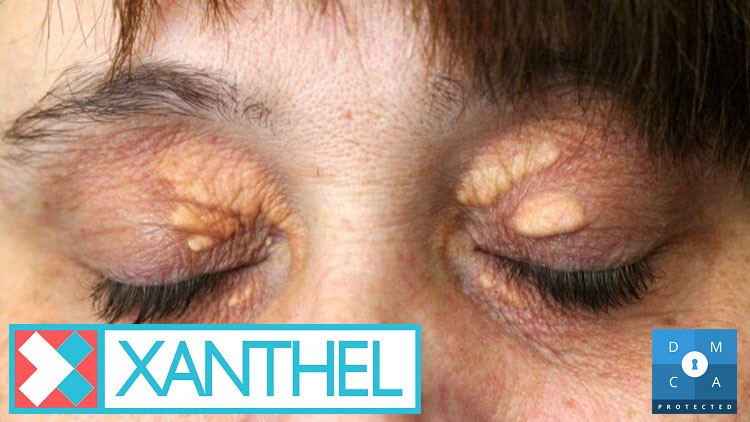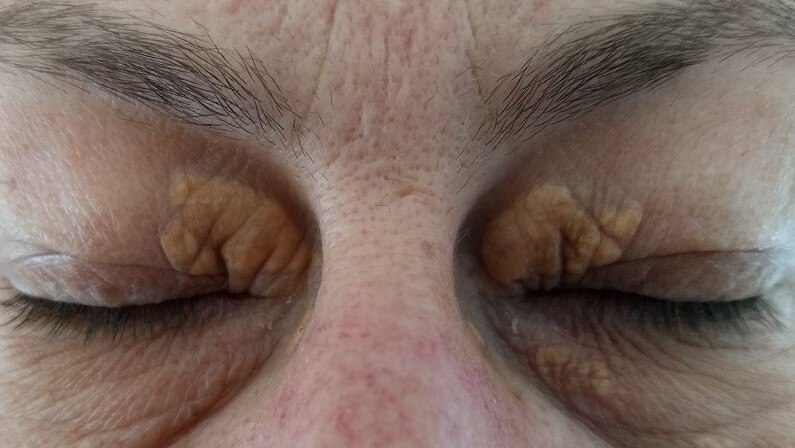Xanthelasma Explained – Deciphering the Medical Term
Xanthelasma Explained – Deciphering the Medical Term
It can be a disarming moment. You receive a diagnosis or read about a condition, and the word itself sounds clinical, even intimidating. Xanthelasma. It does not roll off the tongue. It feels foreign, heavy with medical authority that can create a sense of unease. But what if we told you that behind this complex term is a simple, descriptive meaning? Understanding the word is the first step to disempowering the anxiety it can cause.
Breaking Down the Word: From Greek Roots to Modern Meaning
Medical terminology often seems complex because it is built from ancient languages, primarily Greek and Latin. Xanthelasma is a perfect example. The word is a compound of two Greek root words that, when put together, paint a surprisingly clear picture.
- Xanthos: This Greek root simply means “yellow.” It is the same root found in words like xanthophyll, the yellow pigment in autumn leaves.
- Elasma: This root means “plate” or “foil,” referring to something that is beaten or hammered flat.
When you combine them, “xanthelasma” literally translates to “yellow plate.” Suddenly, the term is not so frightening. It is a direct, straightforward description of what is seen on the skin: a yellowish, flattened plaque. The name is not meant to scare, but to accurately describe, a practice that brings precision to medicine. More than just a name, it is a clear diagnostic signpost for professionals.

What Does This Medical Term Actually Describe?
Now that we have decoded the name, let’s connect it to the physical reality. Xanthelasma palpebrarum, the full clinical term, describes soft, yellowish collections of cholesterol-laden fat that accumulate under the skin. It is not a disease in the way we typically think of one. These plaques are medically benign. They are not cancerous, not infectious, and pose no direct threat to your physical health or your eyesight.
Think of the term as a label on a jar. The label tells you what is inside, in this case, a deposit of lipids. It describes the contents and their appearance without implying anything more sinister. Its primary significance is cosmetic, affecting how the skin around the eyes looks and, by extension, how a person feels about their appearance.

The “Palpebrarum” Suffix: A Clue to its Location
To be even more precise, clinicians often use the full term: xanthelasma palpebrarum. That second word, palpebrarum, is Latin for “of the eyelids.” So, the complete medical term translates to “yellow plate of the eyelid.”
The medical community loves precision for a reason. This name instantly tells any healthcare professional around the world exactly what the condition is and where it is located, leaving no room for ambiguity. It is an efficient, universal language.

Why Medical Terms Matter: The Link to Internal Health
Deciphering the term also helps us understand why doctors take note of it. While xanthelasma itself is harmless, its presence can sometimes be a visual cue to look deeper. For roughly 50% of people who have it, xanthelasma is associated with high cholesterol levels or other fats in the bloodstream, a condition known as dyslipidemia.
The appearance of a “yellow plate” on the eyelid can prompt a doctor to check what is happening with your body’s lipid profile. It is a classic example of how an external sign can reflect internal processes. However, it is crucial to remember the other 50% of cases occur in people with completely normal cholesterol, where the cause may be genetic or localized. The American Academy of Dermatology Association confirms this link, highlighting its importance as a potential indicator.
Suddenly, “xanthelasma” is no longer a frightening, alien term. It is a simple description of a “yellow plate on the eyelid,” a cosmetic issue that can sometimes signal a need for a routine health check. With understanding comes power, the power to see the condition clearly and decide what to do next about its appearance.

A Gentle, Effective Path to Restored Confidence
For those seeking a non-invasive cosmetic solution, Xanthel® Gel offers a new horizon. It is designed specifically for the cosmetic challenge of xanthelasma, providing a direct, focused approach to aesthetic improvement. Its purpose is singular: to visibly diminish the appearance of xanthelasma plaques, often with just a single application at home.
The selectively formulated composition is engineered for cosmetic effectiveness, working to refine the look of the plaques and restore a clearer, more uniform skin appearance. It is designed to work across all skin tones, offering a universal solution for anyone feeling self-conscious about their xanthelasma. Instead of just concealing the issue, you can actively address its appearance.
Take the first step toward reclaiming the clear, confident appearance you deserve. With free worldwide delivery, the path to visible refinement of your xanthelasma is more accessible than ever. Discover Xanthel® Gel today.

Xanthel ® Cosmetic Gel
A focused cosmetic gel formulated specifically to improve the appearance of eyelids bearing xanthelasma plaques. Its composition is selectively designed for cosmetic impact across all skin tones, offering a straightforward, at-home option for managing the look of these blemishes.
A Singular Application
The power of Xanthel ® is in its simplicity. It is formulated for a single, one-time cosmetic application. This focused approach is designed to visibly diminish the appearance of xanthelasma plaques, removing the need for daily or repeat uses.
Legal: This product is for cosmetic use only. Not intended to diagnose, treat, cure, or prevent any medical condition. Consult a healthcare professional regarding skin conditions. Xanthel ® is custom-formulated based on your plaque characteristics, age, and skin tone to ensure optimal cosmetic effectiveness for your xanthelasma.